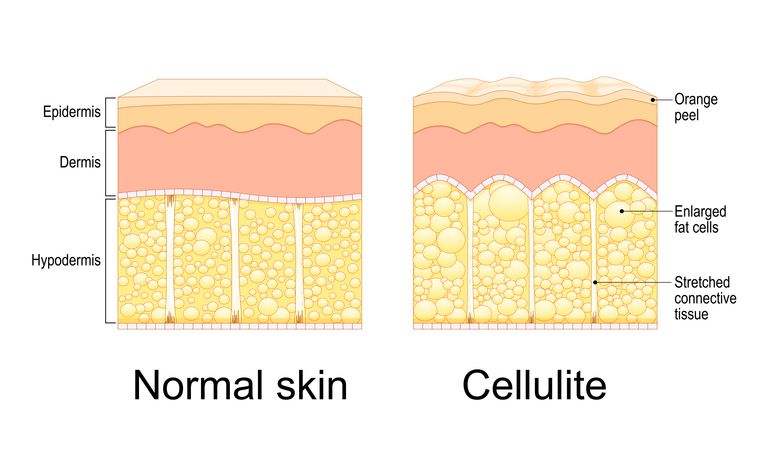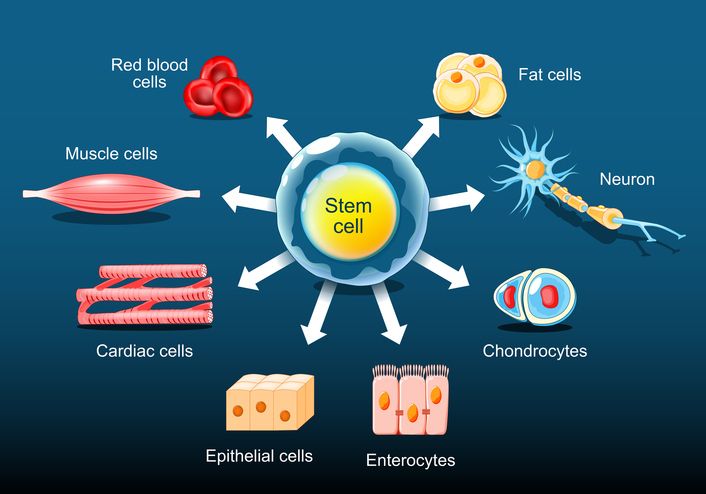
Author: Natalie Ng|Updated: 26 May 2025
Intermittent fasting has become a go-to for people who want a simple way to lose weight and feel better, without overthinking every meal. Instead of cutting out food groups or counting every calorie, it’s more about shifting your eating schedule in a way that works for your body. There are seven effective intermittent fasting schedules that you can choose to accelerate fat loss. The 16/8 method offers a balanced approach with daily 16-hour fasts, while the 5:2 diet alternates normal eating with two low-calorie days. Other options include the complete 24-hour fasts of Eat Stop Eat, the Warrior Diet's 20/4 protocol, Alternate Day Fasting, One Meal A Day (OMAD), and the beginner-friendly 14/10 method. Let's explore which schedule best fits your lifestyle. Some fasting methods are more structured, while others are easier to ease into. Beyond fat loss, many people use intermittent fasting to support blood sugar control, improve insulin sensitivity, and lower the risk of chronic diseases. In this intermittent fasting guide, we’ll walk through seven popular schedules so you can figure out which one fits your lifestyle best. Keep reading to find the one that works for you.

Intermittent Fasting Guide: Foods and Drinks to Avoid During Fasting

During the 16-hour fasting period, stick to drinks without calories—like water, black coffee, or herbal teas. Avoid anything with calories, including flavored drinks or supplements, as they can interrupt the fasting period. Many people find this method works well with their routine, especially if they already skip breakfast or dinner. Some individuals choose to skip dinner instead of breakfast as part of their intermittent fasting routine, which extends the fasting period into the evening and overnight, potentially enhancing the health benefits of fasting.

Intermittent Fasting Method 1: 16/8 Time Restricted Eating for Fat Loss
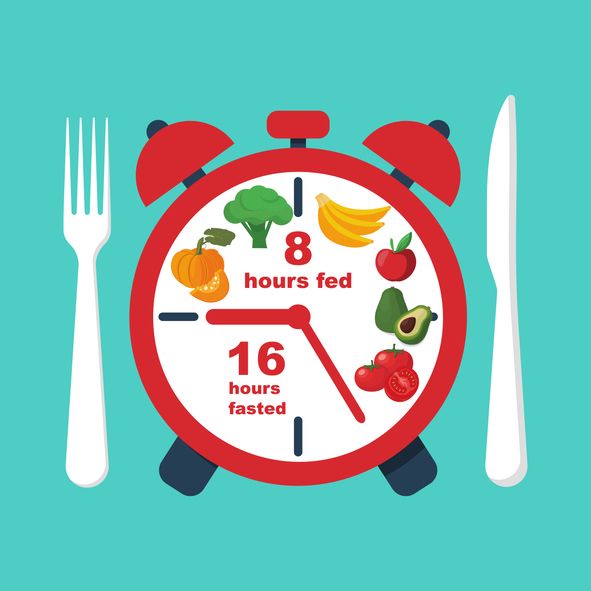
The 16/8 method is one of the most manageable intermittent fasting regimens. You fast for 16 hours and eat all meals within an 8-hour eating window. A typical schedule is eating from 12 PM to 8 PM, then fasting until noon the next day.
Foods to focus on during the eating window
During the 8-hour eating window, focus on eating foods rich in lean protein, healthy fats, and slow-digesting carbs. These support blood sugar balance and stable energy. You don’t need to count every calorie, but eating ultra processed foods or grazing constantly can reduce the benefits of intermittent fasting.
Fat loss benefits of the 16/8 fasting schedule
This eating pattern may reduce total calorie intake by limiting eating periods and preventing late-night snacking. By establishing structured eating patterns with defined eating windows, the 16/8 method supports weight management and metabolic health. It also supports better insulin sensitivity and blood sugar control. Over time, it may help lower body fat and improve weight management, especially when paired with a healthy diet.
The 16/8 method works well for most people starting an intermittent fasting plan. It doesn’t require major changes and can fit easily into regular daily routines.
Read More
Book Now to Experience
S6 Body Sculpting Treatment
1 Minute Self-Registration
Date should not be before minimal date

Intermittent Fasting Method 2: The 5:2 Diet for Weekly Calorie Restriction
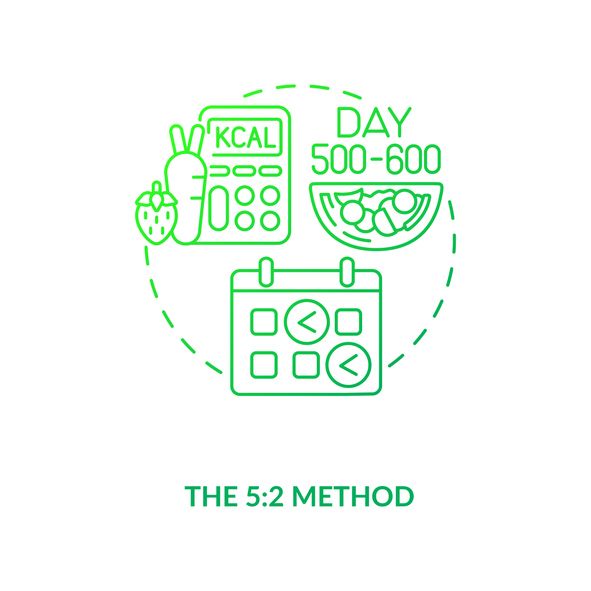
Structure of the 5:2 intermittent fasting plan
The 5:2 intermittent fasting diet is a structured diet plan that focuses on reducing calorie intake just two days a week. You eat normally for five days and restrict calories to about 500–600 on two non-consecutive days. These fasting days are spaced out—many choose Monday and Thursday for consistency.
Choosing the best days for reduced eating
You can pick any two non-consecutive days that fit your schedule. On these lower-calorie days, focus on simple, protein-rich meals with vegetables to help reduce hunger and maintain energy. Meals can be split into two portions or eaten in one sitting.
Fat loss effects of the 5:2 method
The 5:2 structure lowers your total weekly calorie intake without requiring daily restriction. This approach may help burn fat, improve insulin sensitivity, and support better weight management. It also fits into social schedules more easily than daily fasting plans.
Common challenges with the 5:2 intermittent fasting diet
Avoiding overeating on regular eating days is important. Eating far beyond your needs can cancel out the calorie deficit created on fasting days. Staying mindful of portion sizes and overall eating habits across the week supports fat loss and prevents weight gain.

Intermittent Fasting Method 3: Eat Stop Eat for 24-Hour Calorie Restriction

Structure of the Eat Stop Eat fasting method
Eat Stop Eat involves fasting for one or two full 24-hour periods each week. You stop eating after one meal and resume at the same time the next day. For example, if you finish dinner at 7 PM, your next meal would be dinner the following day.
Fluids allowed during fasting periods
During the 24-hour fasting period, only non-caloric drinks like water, black coffee, and unsweetened tea are allowed. These help keep you hydrated and may ease hunger. Avoid any drinks or supplements that contain calories, as they interrupt the fasting phase.
Benefits of extended fasting for fat loss
By reducing calorie intake across the week, Eat Stop Eat may help decrease body fat and improve blood sugar levels. It may also support improved insulin sensitivity and reduce the risk of cardiovascular disease. Extended fasting periods can trigger cellular repair processes within the body's cells, supporting overall health. Since there’s no need to restrict eating on non-fasting days, this fasting method can offer flexibility.
Considerations for digestive comfort after fasting
The 24-hour fasting period may lead to hunger, fatigue, or irritability—especially in the beginning. When breaking your fast, start with small portions and easily digestible foods. This helps avoid stomach discomfort and supports a smooth return to your regular eating pattern.
Book Now to Experience
S6 Body Sculpting Treatment
1 Minute Self-Registration
Date should not be before minimal date

Intermittent Fasting Method 4: Warrior Diet with a 20-Hour Fasting Period
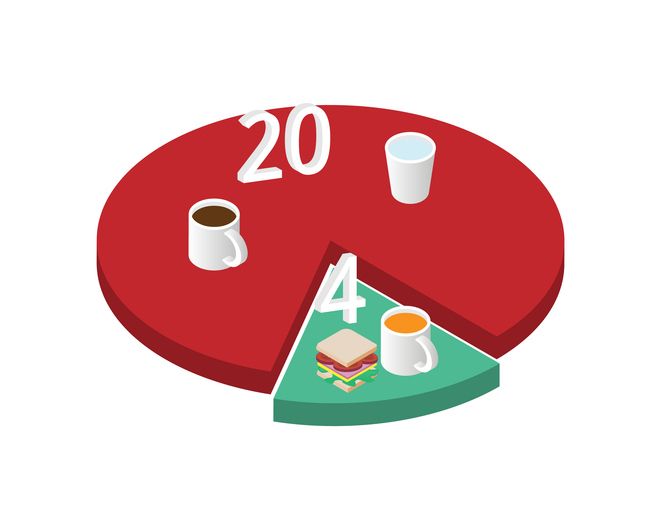
Structure of the Warrior Diet eating pattern
The Warrior Diet uses a 20:4 intermittent fasting schedule. You follow a 20-hour fasting period with a 4-hour eating period, typically in the evening. During the fasting hours, small portions of raw fruits, vegetables, black coffee, clear broth, or tea are allowed.
Meal timing and food order during the eating window
Most people eat their main meal at night. The eating window starts with lighter foods like vegetables and lean protein, followed by heavier items like healthy fats and complex carbs. This structure may help improve digestion and nutrient absorption.
Impact of the Warrior Diet on fat loss and energy
This eating pattern may help lower body fat by reducing total calorie intake. The extended fasting period may support fat burning, improve insulin sensitivity, and boost energy levels. Some also report better focus and appetite control over time.
Challenges with long fasting hours
The 20-hour fasting phase can be hard to maintain, especially for people with demanding schedules or higher energy needs. It may cause hunger, low energy, or disordered eating habits if not managed carefully. This method is more intense than other intermittent fasting regimens and may not be suitable for beginners.

Intermittent Fasting Method 5: Alternate Day Fasting for Fat Loss and Insulin Control
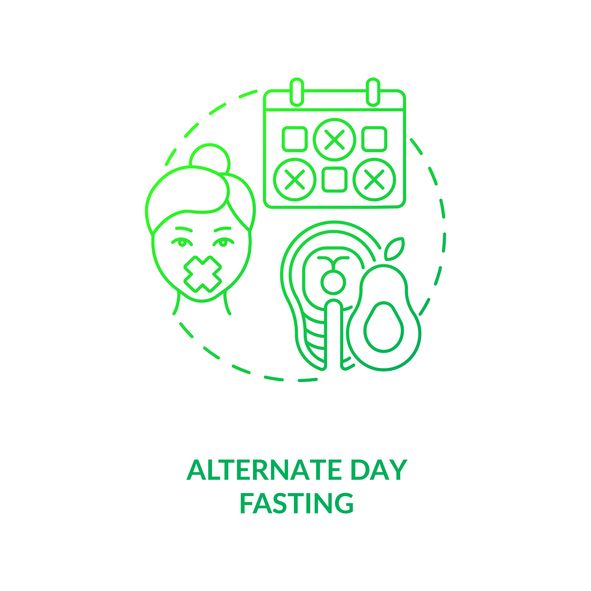
Schedule of alternate day fasting plans
Alternate Day Fasting alternates between eating days and fasting days. On eating days, you follow your regular diet without restrictions. On fasting days, you either fully fast or limit your calorie intake to around 500–600 calories.
Fat loss and metabolic effects of ADF
ADF may help burn fat by creating a strong calorie deficit across the week. This method has been linked to improved insulin sensitivity, reduced body weight, and lower blood pressure. Some randomized controlled trials suggest benefits for heart health and other cardiometabolic risk factors.
Challenges with alternate day fasting
ADF requires strong discipline. The fasting period may cause fatigue, irritability, or reduced energy—especially in the beginning. Adjusting to a new meal schedule can also be difficult and may require time for the body to adapt. It may also be harder to follow socially or during busy weeks. Overeating on feeding days can reduce the benefits of this intermittent fasting plan.
Tips for managing fasting days
To make fasting days more manageable, stay hydrated and keep busy. If following a modified ADF plan, spread your limited calories across small meals with lean protein and vegetables. Avoid intense workouts on fasting days, and focus on rest or light activity. Always seek advice from a health professional before starting ADF, especially if you have underlying health conditions.
Book Now to Experience
S6 Body Sculpting Treatment
1 Minute Self-Registration
Date should not be before minimal date

Intermittent Fasting Method 6: OMAD Diet with a One-Hour Eating Window

Meal structure of the OMAD intermittent fasting plan
The OMAD diet involves eating one single meal each day within a one-hour eating window. For the remaining 23 hours, you fast. This is one of the most restrictive intermittent fasting regimens and requires careful planning to meet daily nutrition needs.
Nutritional focus of the OMAD diet
During your one meal, you must include nutrient-dense foods that provide enough protein, healthy fats (such as olive oil), fiber, vitamins, and minerals. Since all daily calories come from a single meal, food quality becomes essential. Many people choose to eat in the evening for convenience and social flexibility.
Effects of OMAD on weight and metabolic health
The OMAD approach can support fat loss by significantly lowering daily calorie intake. It may also reduce insulin levels, improve insulin sensitivity, and support better blood sugar control. OMAD may provide several health benefits, including enhanced metabolic function and cellular repair. Some evidence also suggests it may enhance cellular repair and metabolic function during extended fasting periods.
Considerations before starting OMAD
Eating only once per day may cause fatigue, low energy, or difficulty concentrating in some people. It can also increase the risk of disordered eating if not approached carefully. OMAD may not be suitable for those with medical conditions, very active lifestyles, or increased nutritional needs. Individuals with a history of eating disorders should not attempt OMAD without medical supervision, as fasting practices can pose significant risks for those struggling with eating disorders. Monitoring how your body responds and seeking advice from a health professional is recommended.

Intermittent Fasting Method 7: 14/10 Time Restricted Eating for Daily Fat Loss Support

Eating pattern of the 14/10 intermittent fasting method
The 14/10 method involves a 14-hour fasting period followed by a 10-hour eating window each day. If you finish dinner at 7 PM, your next meal begins at 9 AM the following morning. This routine closely follows natural circadian rhythms and is one of the most sustainable intermittent fasting schedules, supporting long-term weight management and improved overall health. The 14/10 method can also help improve your health by supporting metabolic balance and sustainable habits.
Meal timing and flexibility for beginners
The 10-hour eating window can be adjusted to match your daily routine. Whether you prefer earlier meals or eating later in the day, this method provides structure without being overly restrictive. It’s often used as a starting point for people transitioning into other intermittent fasting regimens.
Benefits of the 14/10 method for energy and fat loss
This gentle approach may help reduce calorie intake, support fat loss, and improve insulin sensitivity over time. It also helps manage blood sugar levels and reduce reliance on ultra processed foods. When paired with a balanced diet, it can aid in long-term weight management and improved overall health.
Maintaining energy and nutrition during fasting hours
During the fasting period, stick to water, black coffee, or unsweetened tea to stay hydrated and avoid disrupting the fasting state. Within your eating window, focus on whole foods—lean protein, healthy fats, and fibre-rich carbohydrates—to support steady energy and avoid unnecessary snacking.
Book Now to Experience
S6 Body Sculpting Treatment
1 Minute Self-Registration
Date should not be before minimal date

Health Benefits of Intermittent Fasting Beyond Fat Loss
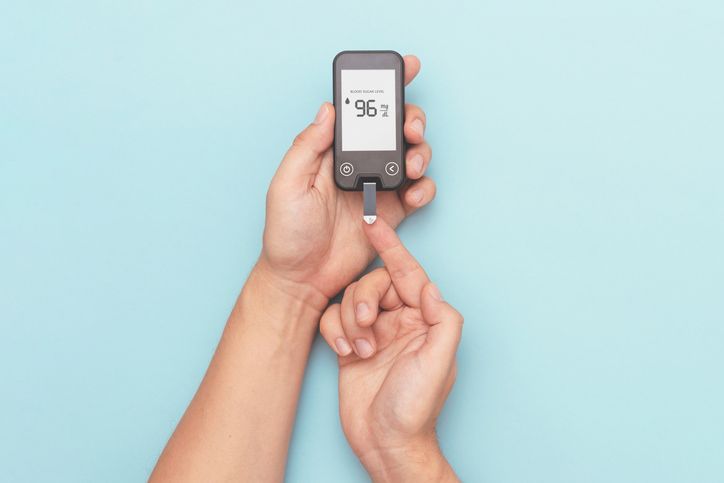
Effects of intermittent fasting on blood sugar and insulin sensitivity
Intermittent fasting may help regulate blood sugar levels by giving the body extended periods without food, which reduces the frequency of insulin spikes. Over time, this eating pattern may improve insulin sensitivity, making it easier for your body to process glucose and reduce the risk of chronic diseases such as type 2 diabetes and cardiovascular disease.
Impact on energy levels, digestion, and cellular repair
Many people notice more stable energy throughout the day once they adjust to a fasting schedule. Without constant eating, digestion improves and the body can use energy more efficiently. Some intermittent fasting plans also support processes like autophagy—your body’s natural system for cleaning out damaged cells—which may contribute to long-term health benefits. A recent systematic review evaluated the effects of intermittent fasting on weight loss and metabolic health, providing a comprehensive overview of the evidence supporting these benefits.
How intermittent fasting supports overall health
Beyond weight loss, regular intermittent fasting may help reduce inflammation, lower blood pressure, and improve several cardiometabolic risk factors. When combined with a healthy diet rich in lean protein, healthy fats, and whole foods, it can support overall health and reduce reliance on ultra processed foods.

Who Should Avoid Intermittent Fasting? Talk to a Health Professional First

Medical conditions that may be affected by intermittent fasting
Intermittent fasting may not be suitable for everyone. If you have underlying health conditions such as diabetes, low blood pressure, a history of disordered eating, chronic diseases that affect your metabolism, or any other medical condition, it’s important to speak with a health professional before starting any intermittent fasting plan. Certain fasting regimens may affect blood sugar levels or interfere with medications.
Special considerations for pregnancy, breastfeeding, and low energy
People who are pregnant or breastfeeding should avoid intermittent fasting, as it can affect energy levels and nutritional intake during these important stages. If you often feel weak, dizzy, or overly tired, fasting may not be the right approach. A typical diet with regular meals might be better for supporting your body’s needs in these cases.
Importance of individual needs and flexibility
Each person’s body responds differently to time restricted eating and caloric restriction. It’s important to listen to your body, adjust your meal schedule as needed, and focus on long-term habits over extreme fasting methods. Seeking guidance from a qualified health professional can help reduce risks and improve your chances of success with any intermittent fasting program. Unlike other diets that focus on restricting specific foods or food groups, intermittent fasting centers on when you eat rather than what you eat.
Book Now to Experience
S6 Body Sculpting Treatment
1 Minute Self-Registration
Date should not be before minimal date

Tips for Success With Any Intermittent Fasting Plan

Start with a method that matches your current lifestyle
Choosing an intermittent fasting schedule that fits your daily routine is one of the best ways to stay consistent. If you're new to fasting, start with a less restrictive plan like the 14/10 method. Once your body adjusts, you can explore other intermittent fasting regimens if needed.
Focus on food quality, not just timing
Even during eating periods, the type of food you choose has a big impact. Eating nutrient-dense meals with lean protein, healthy fats, and whole carbs can improve blood sugar balance and reduce cravings. Relying on ultra processed foods, even within a fasting schedule, can still lead to weight gain.
Stay hydrated throughout the fasting period
Drinking enough water, herbal teas, or black coffee can help curb hunger and support energy levels while fasting. Dehydration can make you feel tired or increase appetite, so fluid intake is just as important as calorie control.
Track your energy and mood during fasting
Your body may take time to adjust to intermittent energy restriction. Pay attention to how you feel—mentally and physically—especially during extended periods without food. If you're feeling overly fatigued or irritable, consider adjusting your eating window or fasting duration.
Be patient and stay flexible
Weight loss and health improvements don’t happen overnight. Intermittent fasting works best when paired with a regular sleep routine, a balanced diet, and reasonable expectations. Give your body time to adapt and allow room for flexibility when life or social plans get in the way.

Enhance Fat Loss Results with New Beauty’s S6 Body Sculpting Treatment
Intermittent fasting can support weight loss by reducing calorie intake, improving insulin sensitivity, and helping your body burn fat more efficiently. But when it comes to stubborn areas—like the belly, thighs, or lower back—diet alone might not deliver the full results you're looking for.
This is where the S6 Body Sculpting Treatment can help. It’s a non-invasive body contouring solution that works alongside your intermittent fasting plan to target fat in specific areas. While fasting supports overall fat burning, the S6 treatment focuses on reducing subcutaneous fat in places that are typically hard to slim down through diet and exercise alone.
How the treatment works
The S6 Body Sculpting Treatment uses low-energy bio-laser technology to break down fat cells beneath the skin. The laser energy triggers the release of fatty acids, which are then naturally eliminated through your body’s lymphatic system. At the same time, a vacuum suction massage helps stimulate blood circulation and speed up lipid metabolism. The treatment also promotes collagen production, which helps tighten and firm the skin—a common concern during rapid fat loss.
Why it pairs well with intermittent fasting
During intermittent fasting, your body shifts into a fat-burning state. The S6 Body Sculpting Treatment enhances this by targeting specific fat storage areas that may be resistant to general weight loss. It can also support your overall fat loss goals by helping maintain a balanced body shape as you lose weight through your intermittent fasting diet.
Fasting and caloric restriction can sometimes lead to loose skin, especially after a noticeable drop in body fat. By stimulating collagen, S6 helps improve skin texture and firmness in those areas, making it a good complement to your intermittent fasting program.
Advantages of the S6 Body Sculpting Treatment
• Non-surgical and non-invasive
• No downtime—return to work or daily activities right after
• Can be used on multiple target areas: arms, belly, back, thighs, calves, waist, and lower buttocks
• Stimulates metabolism to support faster fat elimination
• Helps firm and sculpt the body while promoting healthy skin appearance
If you're following an intermittent fasting plan and looking for more visible shaping in key areas, this treatment may be the extra step that helps you reach your goals faster—without relying on extreme diets or intense workouts.
Book the S6 Body Sculpting Treatment today and combine the benefits of intermittent fasting with targeted body contouring to shape the results you want.
New Beauty's S6 Body Sculpting TreatmentBook Now to Experience
S6 Body Sculpting Treatment
1 Minute Self-Registration
Date should not be before minimal date
FAQ
Can I do intermittent fasting without skipping breakfast?
Yes, intermittent fasting does not require you to skip breakfast specifically—it depends on how you set your eating window. You can still eat breakfast while following intermittent fasting, as long as your eating window includes your preferred breakfast time. For example, if you follow a 16/8 intermittent fasting schedule, you could eat from 9 AM to 5 PM. What matters most is the length of your fasting and eating periods, not which meals you include.
Does intermittent fasting affect muscle loss during weight loss?
Intermittent fasting primarily targets fat loss, but like with any calorie restriction approach, there is a risk of losing lean muscle mass if you are not eating enough protein. Including adequate amounts of lean protein during your eating periods and maintaining regular physical activity can help preserve muscle while following an intermittent fasting diet.
How does intermittent fasting compare to continuous energy restriction?
Continuous energy restriction involves eating fewer calories every day, while intermittent fasting limits when you eat rather than what you eat. Both can support fat loss, but intermittent fasting may be easier for some people to follow long-term and may lead to improved insulin sensitivity and better blood sugar control.
Can intermittent fasting help reduce cravings for ultra processed foods?
Yes, many people find that after a few weeks of following a regular intermittent fasting schedule, cravings for ultra processed foods decrease. This may be due to more stable blood sugar levels and improved awareness of hunger cues, especially when the diet includes whole foods, healthy fats, and protein during eating periods.
Is it safe to combine intermittent fasting with body contouring treatments?
For most healthy individuals, yes. Intermittent fasting supports overall fat loss and metabolic health, while non-invasive body contouring treatments like S6 can target stubborn areas that don’t respond to diet alone. Always speak with a health professional before starting any new intermittent fasting program or body sculpting treatment, especially if you have medical conditions or are on medication.
Recommended Articles
COPYRIGHT© NEW BEAUTY MANAGEMENT LIMITED 2025. ALL RIGHT RESERVED.

